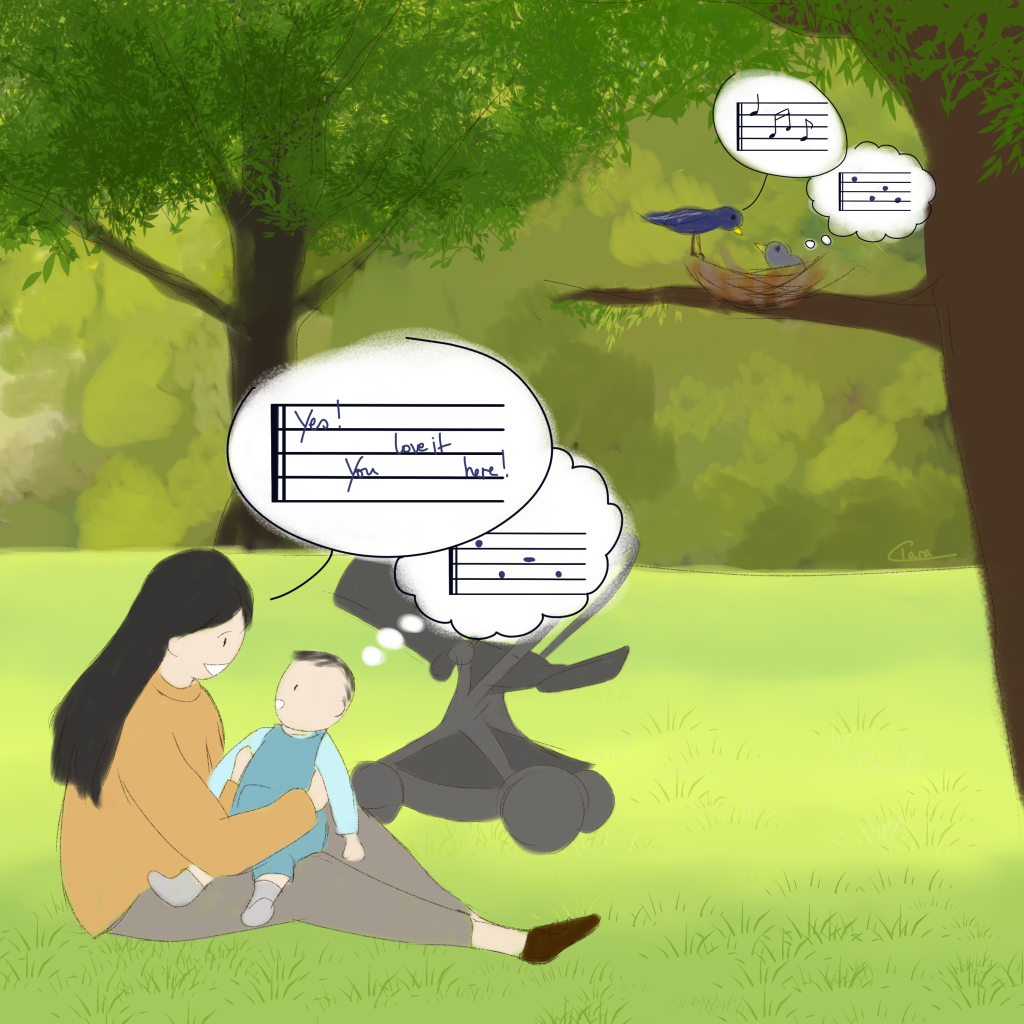What information do newborn babies use to help them learn language?

Imagine you are flipping through TV channels and stop on one in a language you do not know. It can be very hard to pick out words or figure out the meaning. However, what you might notice is a distinct melody. You may notice that it is a melody different from your native language. Or that at certain moments the rhythm suddenly changes, as if the speaker were asking a question. The melody of a language, like intonation, stress, and rhythm, is called ‘prosody’.
Newborn babies are already paying attention to prosody. A newborn can distinguish different languages, by their different prosodies. You do not need to tell a newborn that ‘Let’s go to the park’ is in English and ‘Vamos para o parque’ is in Portugese. She can tell there is a difference just by listening to the prosody.
Prosody can tell a baby a lot more than just which sentences belong to which language. In each language, prosody changes regularly along with words, grammar, and meaning. For example, in English, vocabulary words like ‘dog’, ‘ball’, ‘spoon’, are pronounced with more strength than grammatical words like ‘the’, ‘a’. Even babies who are a few months old are surprised if a grammatical word like ‘the’ or ‘a’ is pronounced with a lot of strength! Prosody can give babies clues as to categories of words, sentence structure, where a word ends and begins, and more.
Join us in a couple weeks when we dive deeper into how prosody can help children learn language!
The scientific sources for our comic:
